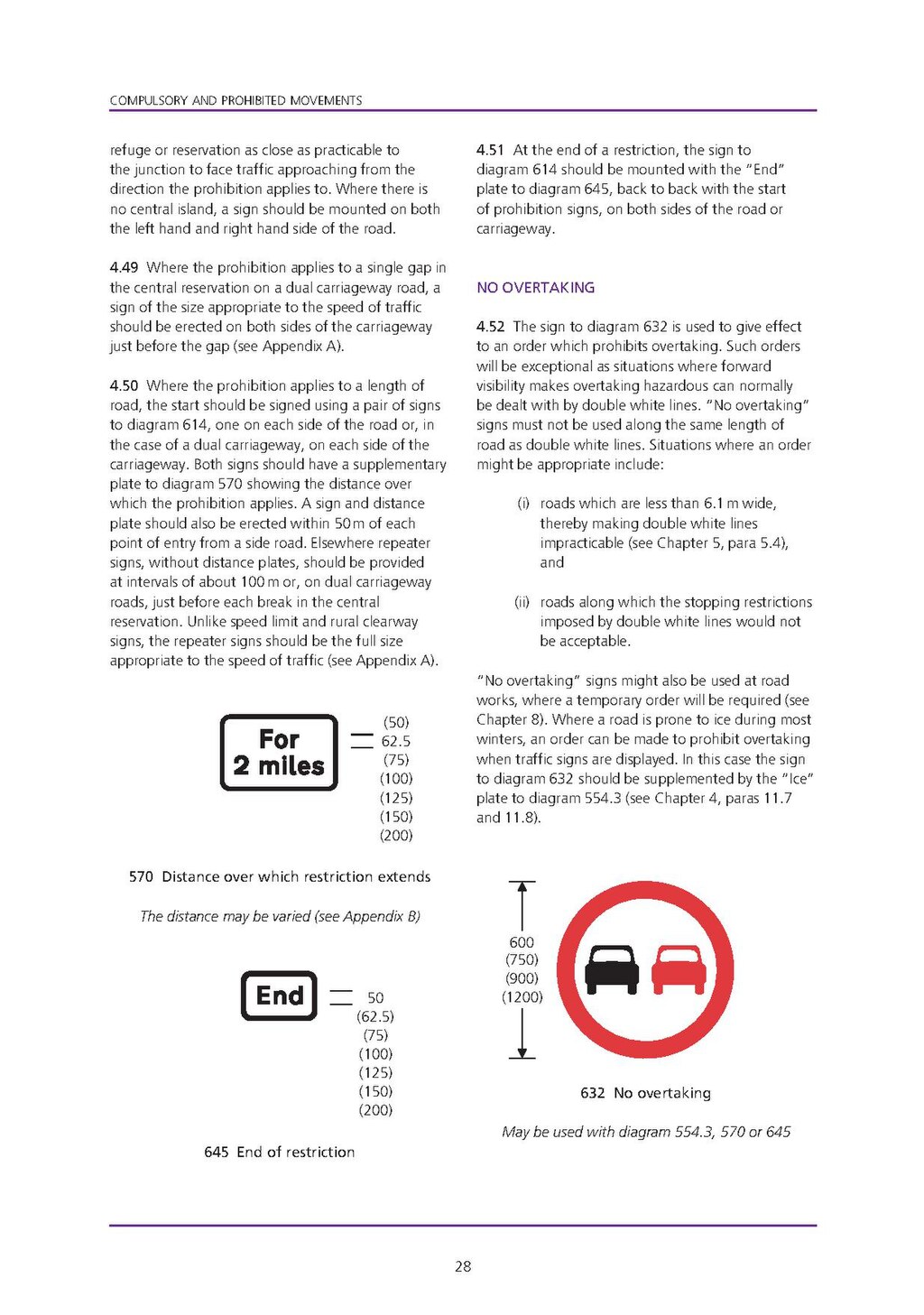refuge or reservation as close as practicable to the junction to face traffic approaching from the direction the prohibition applies to. Where there is no central island, a sign should be mounted on both the left hand and right hand side of the road.
4.49 Where the prohibition applies to a single gap in the central reservation on a dual carriageway road, a sign of the size appropriate to the speed of traffic should be erected on both sides of the carriageway just before the gap (see Appendix A).
4.50 Where the prohibition applies to a length of road, the start should be signed using a pair of signs to diagram 614, one on each side of the road or, in the case of a dual carriageway, on each side of the carriageway. Both signs should have a supplementary plate to diagram 570 showing the distance over which the prohibition applies. A sign and distance plate should also be erected within 50 m of each point of entry from a side road. Elsewhere repeater signs, without distance plates, should be provided at intervals of about 100 m or, on dual carriageway roads, just before each break in the central reservation. Unlike speed limit and rural clearway signs, the repeater signs should be the full size appropriate to the speed of traffic (see Appendix A).
4.51 At the end of a restriction, the sign to diagram 614 should be mounted with the "End" plate to diagram 645, back to back with the start of prohibition signs, on both sides of the road or carriageway.
4.52 The sign to diagram 632 is used to give effect to an order which prohibits overtaking. Such orders will be exceptional as situations where forward visibility makes overtaking hazardous can normally be dealt with by double white lines. "No overtaking" signs must not be used along the same length of road as double white lines. Situations where an order might be appropriate include:
(i) roads which are less than 6.1 m wide, thereby making double white lines impracticable (see Chapter 5, para 5.4), and
(ii) roads along which the stopping restrictions imposed by double white lines would not be acceptable.
"No overtaking" signs might also be used at road works, where a temporary order will be required (see Chapter 8). Where a road is prone to ice during most winters, an order can be made to prohibit overtaking when traffic signs are displayed. In this case the sign to diagram 632 should be supplemented by the "Ice" plate to diagram 554.3 (see Chapter 4, paras 11.7 and 11.8).
28



